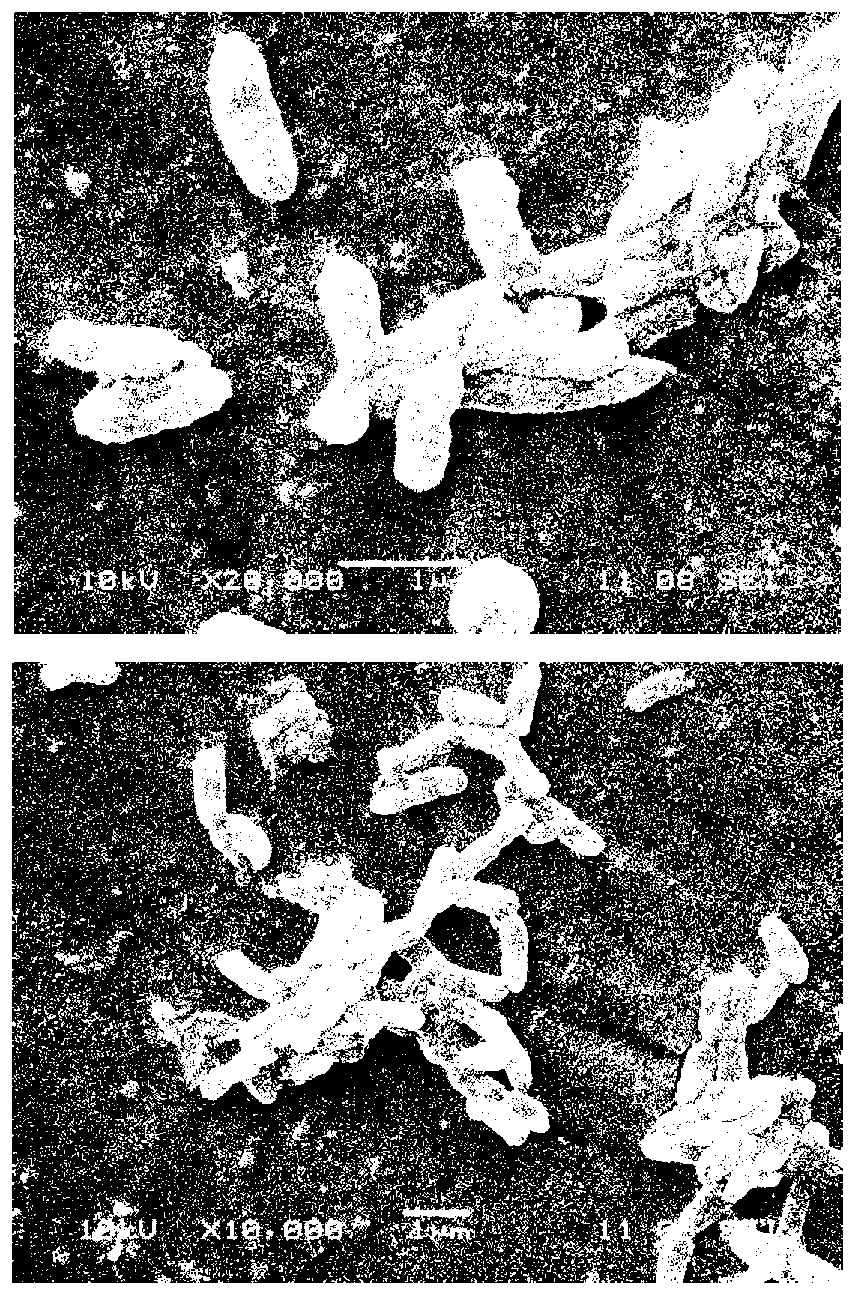Delftia sp. and application thereof to repairing butachlor phytotoxicity
A technology of Delftia and butachlor, which is applied in the field of microbial remediation of environmental pollution, can solve the problems of no reports of Delftia and its degradation of butachlor phytotoxicity, and achieve the effect of wide application prospects
- Summary
- Abstract
- Description
- Claims
- Application Information
AI Technical Summary
Problems solved by technology
Method used
Image
Examples
Embodiment 1
[0030] The isolation and identification of embodiment 1 bacterial strain
[0031] 1. Culture medium:
[0032] Inorganic salt medium: FeS0 4 ·7H 2 O, 0.02g; CaSO 4 , 0.08g; MgSO 4 ·7H 2 O, 0.4g; K 2 HPO 4 , 0.2g; (NH 4 ) 2 SO 4 , 0.2g, 1000ml deionized water, pH7.0, autoclaved at 121°C, 30min.
[0033] LB medium: beef extract 10g, peptone 5g, sodium chloride 10g (solid medium plus agar 15g), 1000mL deionized water, pH7.0, autoclaved at 121°C for 30min.
[0034] 2. Separation and purification of bacteria:
[0035] Take 5g of soil sample and add it to the culture solution of butachlor inorganic salt containing 50mg / L, shake it in the dark at 30℃ (150r / min), and inoculate 5% volume fraction of the bacteria solution into the same fresh soil every 7 days. In the culture medium, and the concentration of butachlor is increased in a gradient of 50mg / L until the concentration of butachlor in the culture medium reaches 200mg / L, so acclimatized for about 2 months. Streak and ...
Embodiment 2
[0040] The restoration effect of embodiment 2 bacterial strain C-5 to alleviating butachlor phytotoxicity
[0041] LB medium was inoculated with 5% seeds, cultured at 30°C for 3 days at 200 r / min, and the supernatant was obtained by centrifuging the fermentation broth. The number of live bacteria per milliliter is about 5×10 9 -4×10 10 . The degrading bacteria C-5 was added to the phytotoxicity rice seedlings, and the emergence rate and plant height of the phytotoxicity rice seedlings were investigated. The test results are as follows:
[0042] Depend on Figure 3-6 It can be clearly seen that when the concentration is 5mg / L, the plant height restoration effect of the phytotoxicity seedlings is the best.
[0043] From the comprehensive analysis in Table 1, it can be seen that the addition of degrading bacteria C-5 has a relatively obvious repair effect on the emergence rate, plant height, root length, and plant fresh weight of rice. At 5 mg / L, 10% (OD600=1.34) inoculatio...
Embodiment 3
[0049] The preparation of embodiment 3 strain C-5 probiotics
[0050] The activated strain C-5 was extracted, LB medium was inoculated with 5% seeds, 200r / min, and cultured in a 30°C incubator for 3 days. Counted by hemocytometer, the bacterial concentration was 5×10 per milliliter 9 -4×10 10 bacterial cells.
[0051] Among them, different dosage forms are prepared according to different application aspects:
[0052] (1) Liquid preparation: use a 500mL Erlenmeyer flask to pack 100ml of LB medium, routinely sterilize it, and then put it on the ultra-clean workbench after cooling, wash the slant with sterile water and inoculate it into the fermentation Erlenmeyer flask, shake the flask and culture at 30°C , 200r / min, cultivated for 24h. Immediately transfer to fermenter for fermentation, preparation of bacteria fermenter culture medium, sterilization, inoculation and fermentation after cooling, 30°C, 200r / min, culture 48h to stop fermentation, the concentration of bacteria i...
PUM
 Login to View More
Login to View More Abstract
Description
Claims
Application Information
 Login to View More
Login to View More - R&D
- Intellectual Property
- Life Sciences
- Materials
- Tech Scout
- Unparalleled Data Quality
- Higher Quality Content
- 60% Fewer Hallucinations
Browse by: Latest US Patents, China's latest patents, Technical Efficacy Thesaurus, Application Domain, Technology Topic, Popular Technical Reports.
© 2025 PatSnap. All rights reserved.Legal|Privacy policy|Modern Slavery Act Transparency Statement|Sitemap|About US| Contact US: help@patsnap.com



